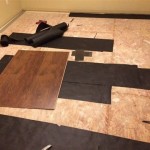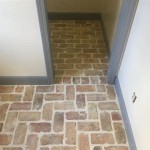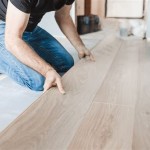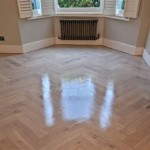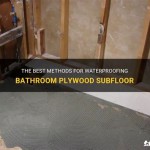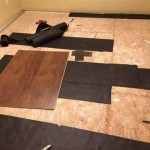Is Carpet Tape Bad for Hardwood Floors and Concrete Walls?
Carpet tape serves as a common adhesive solution for securing carpets, rugs, and other floor coverings in place. Its ease of use and relatively low cost make it an attractive alternative to more permanent installation methods. However, the potential impact of carpet tape on underlying surfaces, particularly hardwood floors and concrete walls, warrants careful consideration. Understanding the composition of carpet tape, its adhesive properties, and the nature of the surfaces it interacts with is crucial in determining whether its use poses a risk of damage.
Carpet tape typically consists of a carrier material, such as cloth, paper, or a plastic film, coated on both sides with an adhesive. The adhesive formulation can vary widely, encompassing rubber-based, acrylic-based, and solvent-based options. The strength of the adhesive bond also varies depending on the type of tape. Some tapes are designed for light-duty applications and are intended to be easily removable, while others are formulated for more permanent adhesion. This variability in adhesive strength is a key factor in evaluating the potential for damage to hardwood floors and concrete walls.
Hardwood floors are prized for their aesthetic appeal, durability, and value. These floors typically feature a protective finish, such as polyurethane, varnish, or wax, which shields the wood from moisture, scratches, and wear. The integrity of this finish is paramount to the long-term preservation of the floor. Concrete walls, while inherently durable, can also be susceptible to damage from adhesives, particularly if they have been painted or treated with a sealant. The porosity of concrete can allow adhesives to penetrate the surface, making removal challenging and potentially leading to discoloration or delamination.
Potential Damage to Hardwood Floors
The primary concern regarding the use of carpet tape on hardwood floors is the potential for damage to the finish. The adhesive in the carpet tape can interact with the finish, leading to several undesirable outcomes. One common issue is the lifting or removal of the finish when the tape is removed. Strong adhesives can create a bond that exceeds the adhesion between the finish and the wood itself. As a result, when the tape is pulled up, it can pull the finish along with it, leaving behind a bare spot or a damaged area. This is particularly problematic with older floors, where the finish may have become brittle or weakened over time.
Another potential problem is adhesive residue. Even if the tape is removed cleanly, it can leave behind a sticky residue that is difficult to clean. This residue can attract dirt and debris, creating a unsightly appearance. Moreover, the solvents and chemicals used to remove the residue can themselves damage the floor finish. Some cleaning agents can soften or dissolve the finish, leading to discoloration or a loss of gloss. Choosing appropriate cleaning agents specifically designed for hardwood floors is essential to minimize the risk of further damage.
Furthermore, certain types of carpet tape can react chemically with the finish on hardwood floors. Some adhesives contain solvents or plasticizers that can soften or dissolve the finish over time. This can lead to a dull or hazy appearance, particularly in areas where the tape has been in contact with the floor for an extended period. This type of damage may not be immediately apparent but can become noticeable over time, requiring refinishing to restore the floor's original luster.
Risks to Concrete Walls
While concrete is a durable material, concrete walls are not immune to damage from carpet tape. The primary concern with concrete walls is the potential for damage to any existing paint or sealant. Many concrete walls are painted or coated with a sealant to improve their appearance, protect them from moisture, and facilitate cleaning. The adhesive in carpet tape can interact with these coatings, leading to peeling, bubbling, or discoloration.
When carpet tape is applied to painted concrete walls, the adhesive can create a strong bond with the paint. Upon removal, the tape can pull the paint away from the concrete surface, leaving behind a bare patch. This is especially likely if the paint job is old or if the paint was not properly applied in the first place. The type of paint used can also influence the likelihood of damage. Some paints, such as latex paints, are more susceptible to peeling than others, such as epoxy paints.
Similarly, sealants applied to concrete walls can be damaged by carpet tape. Sealants are designed to protect the concrete from water damage and staining. However, some sealants are relatively soft and can be easily damaged by adhesives. The removal of carpet tape can strip away the sealant, leaving the concrete exposed to the elements. This can lead to staining, cracking, and other forms of deterioration over time. The type of sealant used, as well as its age and condition, will influence its susceptibility to damage.
In addition to damaging paint and sealants, carpet tape can also leave behind adhesive residue on concrete walls. This residue can be difficult to remove, particularly if the tape has been in place for a long time. Harsh cleaning agents may be required to remove the residue, but these agents can also damage the underlying surface. The porosity of concrete can make it even more challenging to remove adhesive residue, as the adhesive can seep into the pores of the concrete. This can leave behind a permanent stain or discoloration.
Alternatives and Precautions
Given the potential for damage, it is prudent to consider alternative methods for securing carpets and rugs, particularly on hardwood floors and concrete walls. Several options offer a lower risk of damage while still providing adequate stability. One alternative is the use of rug pads. Rug pads are typically made of felt, rubber, or a combination of materials and are designed to provide cushioning and prevent rugs from slipping. They do not rely on adhesives and therefore pose a minimal risk of damaging underlying surfaces.
Another alternative is the use of non-adhesive rug grippers. These grippers typically consist of small, flat pieces of material that are placed under the corners or edges of a rug to prevent it from sliding. They rely on friction to hold the rug in place and do not leave behind any residue. While they may not be suitable for all situations, they can be a good option for lightweight rugs on smooth surfaces.
If carpet tape is deemed necessary, it is crucial to select the right type of tape and to take precautions during application and removal. When choosing carpet tape for use on hardwood floors, opt for a tape that is specifically designed for use on delicate surfaces. These tapes typically have a lower adhesive strength and are less likely to damage the finish. Always test the tape in an inconspicuous area before applying it to the entire floor. This will allow one to assess the tape's impact on the finish and to determine whether it is likely to cause damage.
When applying carpet tape, ensure that the surfaces are clean and dry. Dirt and debris can interfere with the adhesive bond and can also scratch the finish. Use a clean cloth to wipe the floor or wall before applying the tape. Avoid using harsh cleaning agents, as these can damage the surface. When removing carpet tape, proceed slowly and carefully. Gently peel the tape away from the surface, using a plastic scraper or putty knife to help lift the edges. Avoid pulling the tape too quickly, as this can increase the risk of damaging the finish.
If adhesive residue remains after removing the tape, attempt to remove it using a mild solvent, such as mineral spirits or rubbing alcohol. Always test the solvent in an inconspicuous area first to ensure that it does not damage the surface. Apply the solvent to a clean cloth and gently rub the residue until it is dissolved. Avoid pouring the solvent directly onto the floor or wall, as this can cause damage. Once the residue is removed, clean the area with a damp cloth to remove any remaining solvent.
For concrete walls, consider using picture-hanging strips or other adhesive products that are specifically designed for hanging items on painted surfaces. These products typically use a less aggressive adhesive and are designed to be removed without damaging the paint. Always follow the manufacturer's instructions when using these products. If carpet tape is used on concrete walls, take the same precautions as with hardwood floors, including testing the tape in an inconspicuous area and removing it slowly and carefully.
In conclusion, while carpet tape offers a convenient solution for securing carpets and rugs, its use on hardwood floors and concrete walls carries a risk of damage. Understanding the properties of carpet tape and the characteristics of the underlying surfaces is essential to mitigating this risk. By considering alternative methods and taking precautions during application and removal, one can minimize the potential for damage and preserve the integrity of these surfaces.

Pros And Cons Of Applying Rug Tape On Your Floors Carpets Rugpadusa
How To Use Carpet Tape

Pros And Cons Of Applying Rug Tape On Your Floors Carpets Rugpadusa

Pros And Cons Of Applying Rug Tape On Your Floors Carpets Rugpadusa

Roberts Rug Gripper 60 Ft Indoor Carpet Tile Solid Hardwood Laminate Vinyl Tape Roll 50 588 The Home

Shurtape 1 88 In X 75 Ft White Double Sided Seam Tape 280396 At Com

Roberts Rug Gripper 60 Ft Indoor Carpet Tile Solid Hardwood Laminate Vinyl Tape Roll 50 588 The Home

Flooring How Can I Remove Carpet Adhesive From Hardwood Floors Home Improvement Stack Exchange

Homeeasy 1 875 In X 75 Ft Tan Double Sided Seam Tape 142435 At Com

Roberts Rug Gripper 2 1 In X 25 Ft Antislip Pressure Sensitive Mesh Tape For Small Indoor Rugs 50 580 The Home
See Also
